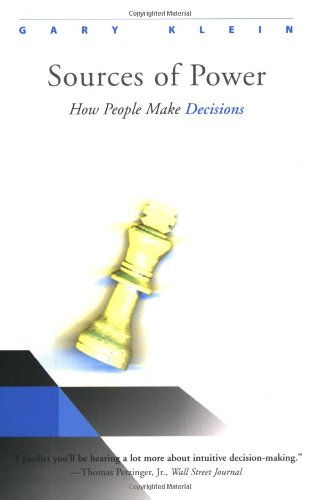Written by: Greg Ellifritz
The ability to make fast decisions under stressful and time-pressed conditions is a critical component of winning a lethal force confrontation. Unfortunately, it is also very hard to teach. Research on decision making has traditionally been conducted in laboratories under calm conditions. The implications derived from such studies don’t translate well into the combative arena.
In the book Sources of Power: How People Make Decisions, Author Gary Klein attempts to remedy this problem by studying high-stress decisions made by people in crisis situations. From the author’s summary:
Since 1985, Klein has conducted fieldwork to find out how people tackle challenges in difficult, nonroutine situations. Sources of Power is based on observations of humans acting under such real-life constraints as time pressure, high stakes, personal responsibility, and shifting conditions. The professionals studied include firefighters, critical care nurses, pilots, nuclear power plant operators, battle planners, and chess masters. Each chapter builds on key incidents and examples to make the description of the methodology and phenomena more vivid. In addition to providing information that can be used by professionals in management, psychology, engineering, and other fields, the book presents an overview of the research approach of naturalistic decision making and expands our knowledge of the strengths people bring to difficult tasks.
The fundamental thesis of the book involves a concept the author calls “recognition primed decision making.” In crisis situations, people do not take the time to evaluate the relative merits of all possible courses of action. Instead they look to classify the event into a prototype of an event that they have seen (or read about) before. Comparing the current event to past experiences:
“…let them identify a reasonable reaction as the first one they considered, so they did not bother thinking of others. They were not being perverse. They were being skillful”
Other ideas that the author points out are:
– Courses of action are planned by imagining how those actions will play out rather than comparing all options.
– Imagining potential outcomes also allows the decision maker to imagine potential downfalls or hazards. It allows him to plan to avoid those, thereby making even better decisions than by merely evaluating only the possible response options.
– Decision makers usually settle for the first workable option they come up with rather than wasting time looking for the “best” decision in a crisis situation.
– Poor decisions aren’t made from bad thinking practices or biases. They are caused by lack of experience. The decision maker doesn’t have the experience to correctly associate current events with his “library” of past events to generate a solution.
– Good crisis decision making isn’t analytical. It’s imaginative.
The author makes a very good case that proper decision making under stress depends on the decider’s perceptual abilities and experience. I believe that is what we should be focusing on when we are providing firearms and combative training. We should be teaching people what perceptual cues to look for and how to relate those cues to a “catalog” of past experiences to predict the likely course of action. This book describes a process to do that.
If you are involved in force-on force scenario training or the training of any combative skill set, I think this book would be a good addition to your library.
The book is available on Amazon.com. If you would like additional book recommendations, please check out my Recommended Reading page.
Some of the above links (from Amazon.com) are affiliate links. If you purchase these items, I get a small percentage of the sale at no extra cost to you.


